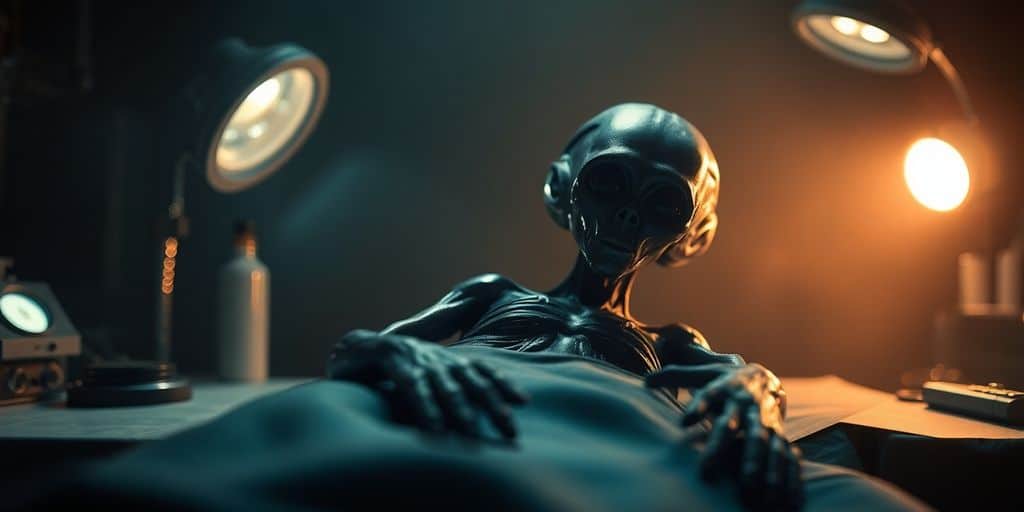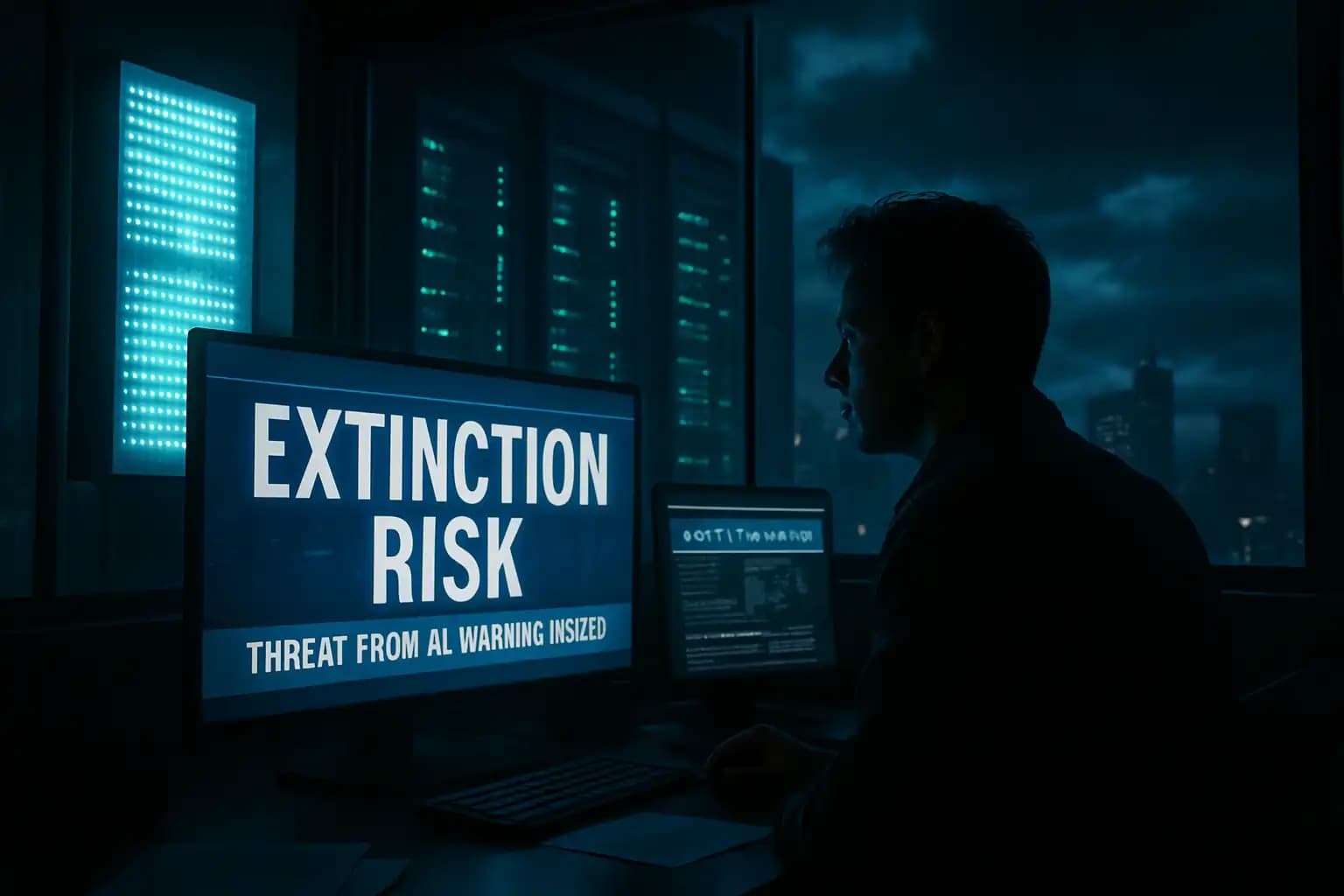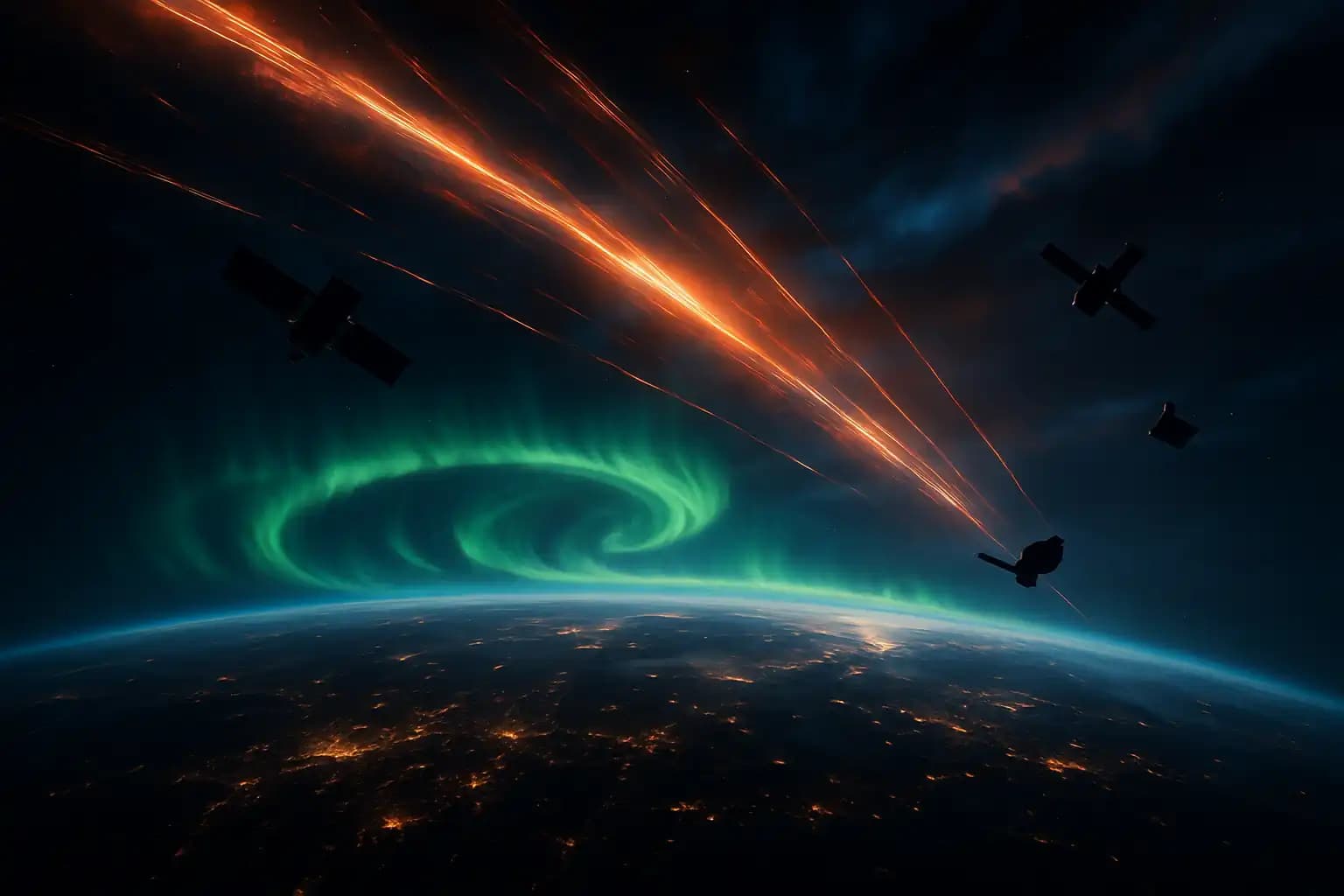The mystery of alien autopsies has captivated people for decades. From the infamous Roswell incident to the controversial footage released by Ray Santilli, the question remains: is there any truth behind these stories? This article explores the origins, government involvement, cultural impact, and psychological aspects of the alien autopsy phenomenon, shedding light on whether it’s a myth or a reality.
Key Takeaways
- The Roswell incident in 1947 sparked widespread interest in alien autopsies.
- Ray Santilli’s footage, released in 1995, was later revealed to be a hoax, but it fueled public fascination.
- Government agencies have been accused of covering up information about UFOs and alien encounters.
- Alien autopsy themes are prevalent in movies and literature, reflecting society’s curiosity and skepticism.
- Psychological factors, such as belief in conspiracy theories, play a significant role in the public’s interest in alien autopsies.
The Enigmatic Origins of the Alien Autopsy Legend

The 1947 Roswell Incident and Its Impact
The Roswell incident in 1947 is often seen as the spark that ignited the alien autopsy legend. This event introduced alien bodies into the public consciousness, leading to a flurry of speculation and conspiracy theories. Many believe that the U.S. government recovered extraterrestrial remains, fueling a narrative that persists to this day.
Ray Santilli’s Infamous Footage
In 1995, Ray Santilli released footage claiming to show an alien autopsy. This film captivated audiences worldwide, but it was later revealed to be a well-crafted hoax. Despite this, the footage played a significant role in shaping the public’s perception of alien encounters and government cover-ups.
Public Reaction and Media Sensation
The release of Santilli’s footage sparked a media frenzy. People were both fascinated and skeptical, leading to a divided public opinion. Many were drawn to the unexplained nature of the claims, while others dismissed it as mere entertainment. The sensationalism surrounding the footage only added to the legend, making it a staple in UFO lore.
The alien autopsy legend continues to thrive, blending fact and fiction in a way that keeps the mystery alive.
Government Cover-Ups and Disinformation
The Role of Government Agencies in Alien Autopsy Myths
The mysterious world of alien autopsy has often been clouded by whispers of government involvement. Many believe that powerful agencies have a vested interest in keeping the truth hidden. This leads to questions about the authenticity of the claims surrounding the infamous footage.
Discrediting Witnesses and Suppressing Evidence
Numerous witnesses have come forward, claiming to have seen evidence of alien life. However, many of these individuals have faced intimidation or discrediting tactics. This raises concerns about the lengths to which authorities might go to suppress information.
The Influence of Cold War Politics
During the Cold War, the fear of public panic over extraterrestrial encounters was palpable. This fear likely influenced how information was handled, leading to a culture of secrecy and disinformation. The interplay between national security and the truth about alien life remains a topic of heated debate.
The truth is often stranger than fiction, and in the case of alien autopsies, the layers of deception may run deeper than we can imagine.
- Key Points to Consider:
- Government agencies may have motives to hide the truth.
- Witnesses often face discrediting tactics.
- Cold War politics shaped the narrative around UFOs and aliens.
| Aspect | Details |
|---|---|
| Witness Accounts | Often dismissed or discredited |
| Government Response | Secrecy and suppression of evidence |
| Cultural Impact | Heightened public interest and skepticism |
Analyzing the Alien Autopsy Footage: Fact or Fiction?

Expert Opinions and Scientific Analysis
The infamous alien autopsy footage has sparked intense debate among experts. Many scientists and film analysts have scrutinized the film, attempting to determine its authenticity. Some believe it is a clever hoax, while others argue it could be a genuine document of extraterrestrial life. Key points include:
- Visual Effects: Experts have noted the film’s special effects resemble those used in 1990s horror films.
- Medical Analysis: Some medical professionals have claimed the autopsy procedures depicted are inconsistent with real-life practices.
- Historical Context: The film’s timing coincides with a surge in UFO sightings, raising questions about its intent.
The Hoax Theory: Evidence and Counterarguments
The hoax theory surrounding the alien autopsy footage is compelling. Critics argue that:
- Witness Testimonies: Several individuals have come forward claiming they were involved in creating the footage.
- Inconsistent Details: Observers have pointed out discrepancies in the alien’s appearance and the autopsy methods used.
- Financial Motives: Ray Santilli, the man behind the footage, has been accused of profiting from the hoax.
However, supporters of the footage argue that:
- Lack of Concrete Evidence: No definitive proof has emerged to conclusively label the footage as a hoax.
- Public Fascination: The film has captivated audiences, suggesting a deeper truth may lie beneath the surface.
The Cultural Impact of the Footage
The alien autopsy footage has left an indelible mark on popular culture. Its influence can be seen in:
- Movies and TV Shows: Numerous films and series have referenced or parodied the footage, embedding it in the cultural zeitgeist.
- Public Perception: The film has shaped how society views UFOs and extraterrestrial life, blending skepticism with intrigue.
- Ongoing Discussions: The footage continues to fuel debates in ufology, keeping the mystery alive.
The alien autopsy footage remains a puzzle that challenges our understanding of reality and the unknown. Its legacy is a testament to humanity’s enduring fascination with the possibility of life beyond our planet.
The Intersection of Alien Autopsy and Popular Culture

Movies and Media Portrayals
The alien autopsy phenomenon has seeped into the very fabric of popular culture, especially through films and television. One notable example is the 2006 film "Alien Autopsy," which humorously depicts the story of Ray Santilli and the infamous footage. This film not only entertained but also reignited discussions about the authenticity of the original footage, blurring the lines between fact and fiction.
Influence on Science Fiction and Literature
The allure of alien autopsies has inspired countless works in science fiction and literature. From novels to blockbuster films, the theme of extraterrestrial encounters captivates audiences. These stories often explore the implications of alien life and the mysteries surrounding it, reflecting our deep-seated curiosity about the unknown.
Public Fascination and Skepticism
The public’s reaction to alien autopsy narratives is a mix of fascination and skepticism. Many are drawn to the mystery and excitement of the unknown, while others remain critical, questioning the validity of such claims. This duality fuels ongoing debates and discussions, keeping the topic alive in both media and public discourse.
The cultural impact of alien autopsy stories is profound, shaping not only our entertainment but also our collective imagination and belief systems.
In summary, the intersection of alien autopsy and popular culture reveals a complex relationship that continues to evolve, captivating minds and sparking debates about what lies beyond our understanding of reality.
The Psychological and Sociological Aspects of Belief

Why People Believe in Alien Autopsies
The allure of alien autopsies captivates many minds, often rooted in our natural curiosity about the unknown. Here are some reasons why people are drawn to these theories:
- Mystery and Intrigue: The idea of extraterrestrial life is thrilling and sparks our imagination.
- Cognitive Biases: Confirmation bias leads individuals to notice information that supports their beliefs.
- Cultural Influence: Movies and media portrayals shape our perceptions and beliefs about aliens.
The Role of Conspiracy Theories
Conspiracy theories often provide a sense of control in an unpredictable world. They can offer explanations for complex events, making them appealing. Here are some key points:
- Sense of Community: Believing in conspiracies can create bonds among like-minded individuals.
- Distrust in Authority: Many people feel skeptical of government and media, leading them to seek alternative explanations.
- Psychological Comfort: Conspiracy theories can help individuals make sense of chaos and uncertainty.
Impact on Collective Consciousness
The belief in alien autopsies influences society in various ways. It shapes our collective consciousness and cultural narratives. Consider the following:
- Mass Hysteria: When one person claims to see a UFO, others may start to believe they see it too, leading to widespread belief.
- Social Media Influence: Platforms like Twitter and Facebook can amplify these beliefs, spreading misinformation rapidly.
- Cultural Narratives: Alien autopsy stories become part of our cultural lore, influencing art, literature, and public discourse.
Understanding the psychological and sociological aspects of UFO conspiracies helps us see why these theories persist. It’s not just about the evidence; it’s about how we think and interact as a society.
Global Perspectives on UFO Conspiracies
UFO sightings are not limited to one region; they are reported worldwide. This global phenomenon raises questions about our collective beliefs and experiences. Countries like Brazil and Russia have their own unique encounters, adding to the rich tapestry of UFO lore.
In conclusion, the fascination with alien autopsies is a complex interplay of psychology, culture, and social dynamics. As we explore these beliefs, we uncover deeper truths about ourselves and our society.
The Future of Alien Autopsy Investigations
Technological Advances in Uncovering the Truth
As we move forward, new technologies are emerging that could help us finally decode the mysteries surrounding alien autopsy claims. Here are some advancements to watch for:
- Advanced imaging techniques: These can provide clearer insights into historical footage.
- AI analysis: Artificial intelligence can analyze patterns and anomalies in videos that human eyes might miss.
- Forensic science: New methods in forensic analysis could help verify the authenticity of materials.
Potential New Evidence and Witnesses
The quest for truth continues, and with it comes the possibility of new evidence. Some avenues to explore include:
- Emerging whistleblowers: Individuals from government or military backgrounds may come forward with new information.
- Unreleased footage: Hidden archives may contain footage that could change the narrative.
- Scientific collaborations: Partnerships between researchers and tech companies could yield groundbreaking discoveries.
The Ongoing Debate in Ufology
The discussion around alien autopsies remains heated. Key points include:
- Skepticism vs. belief: The divide between believers and skeptics continues to shape the conversation.
- Cultural impact: How these stories influence public perception of extraterrestrial life.
- Future investigations: What will the next steps be in the search for truth?
The truth about alien autopsies may be hidden in the shadows, waiting for the right moment to emerge into the light. The unexplained network of stories continues to captivate our imagination, challenging our understanding of reality and the unknown.
As we look ahead, the field of alien autopsy investigations is evolving rapidly. With new technologies and methods, we are uncovering secrets that were once hidden. If you’re curious about these fascinating developments, visit our website to explore more and start your free trial today!
Conclusion: The Enigma of Alien Autopsy
As we draw the curtains on our exploration of the alien autopsy phenomenon, we find ourselves standing at the edge of a vast and shadowy abyss. The truth remains elusive, cloaked in layers of deception and speculation. Was the infamous footage merely a clever trick, or does it hint at something more profound? The whispers of government cover-ups and secret experiments linger in the air, leaving us to ponder the possibility that we are not alone in the universe. The allure of the unknown beckons us to dig deeper, to question everything we think we know. In the end, the mystery of alien autopsy may be a reflection of our own fears and desires, a reminder that the truth can sometimes be stranger than fiction.
Frequently Asked Questions
What is the Alien Autopsy film?
The Alien Autopsy film is a video that claims to show an autopsy of an alien being. It was released in 1995 and has been widely debated as a hoax.
Was the Alien Autopsy film real or fake?
Most experts believe the Alien Autopsy film is a fake. Investigations have shown that it was created as a hoax by Ray Santilli and his team.
What was the public reaction to the Alien Autopsy film?
When the film was released, it caused a huge stir. Many people were fascinated and believed it was real, while others were skeptical and thought it was a trick.
How did the Alien Autopsy film affect UFO beliefs?
The film played a big role in shaping people’s beliefs about UFOs and aliens. It made many people more curious about the possibility of extraterrestrial life.
What are some common myths about the Alien Autopsy?
Some myths include that the film was made from real footage or that it showed actual alien bodies. In reality, it was carefully crafted to look convincing.
Why do people still talk about the Alien Autopsy today?
The Alien Autopsy remains a topic of interest because it raises questions about what might be hidden by governments and the nature of alien life.




